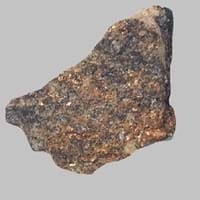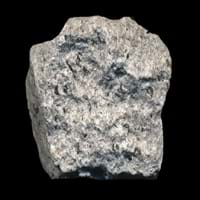Adakite and Porphyry
Definition
Definition
Adakite is an intermediate to felsic volcanic rock that has geochemical characteristics of magma which is said to be formed by partial melting of altered basalt that is subducted below volcanic arcs
Porphyry is a reddish-brown to purple igneous rock containing large phenocrysts of various minerals embedded in a fine-grained matrix
History
Origin
Adak, Aleutian Islands
Egypt
Discoverer
Defant and Drummond
Unknown
Etymology
From Adak, Aleutian Islands
From Old French porfire, from Italian porfiro and in some cases directly from Latin porphyrites
Class
Igneous Rocks
Igneous Rocks
Sub-Class
Durable Rock, Medium Hardness Rock
Durable Rock, Hard Rock
Family
Group
Volcanic
Plutonic
Other Categories
Fine Grained Rock, Medium Grained Rock, Opaque Rock
Fine Grained Rock, Opaque Rock
Texture
Texture
Porphyritic
Porphyritic
Color
Black, Brown, Light to Dark Grey
Black, Brown, Colourless, Green, Grey, Red, Rust, White
Maintenance
Less
Less
Durability
Durable
Durable
Water Resistant
No
No
Scratch Resistant
No
Yes
Stain Resistant
No
Yes
Wind Resistant
Yes
No
Acid Resistant
Yes
Yes
Appearance
Dull and Soft
Dull
Uses
Architecture
Interior Uses
Decorative Aggregates, Floor Tiles, Homes, Hotels, Kitchens
Decorative Aggregates, Interior Decoration
Exterior Uses
As Building Stone, As Facing Stone, Office Buildings
Garden Decoration, Paving Stone
Other Architectural Uses
Whetstones
Curbing
Industry
Construction Industry
As Dimension Stone, Cobblestones, Rail Track Ballast, Roadstone
Construction Aggregate
Medical Industry
Not Yet Used
Not Yet Used
Antiquity Uses
Monuments, Sculpture, Small Figurines
Artifacts, Monuments, Sculpture
Other Uses
Commercial Uses
Commemorative Tablets, Pottery, Used in aquariums
Creating Artwork, Gemstone, Jewelry
Types
Types
Not Available
Rhomb Porphyry
Features
Has High structural resistance against erosion and climate, Host rock for Diamond, Very fine grained rock
Generally rough to touch, Is one of the oldest rock, Surfaces are often shiny
Archaeological Significance
Monuments
Used
Used
Famous Monuments
Data Not Available
Data Not Available
Sculpture
Used
Used
Famous Sculptures
Data Not Available
Data Not Available
Pictographs
Used
Not Used
Petroglyphs
Used
Not Used
Figurines
Used
Used
Fossils
Absent
Absent
Formation
Formation
Adakite rocks are formed when the hydrous fluids are released from minerals that break down in metamorphosed basalt, and rise into the mantle they initiate partial melting.
Porphyry is formed in two stages: the magma cools slowly deep within the crust or the magma is cools rapidly as it erupts from a volcano, creating small grains that are usually invisible to naked eye.
Composition
Mineral Content
Olivine, Plagioclase, Pyroxene
Biotite, Chert, Feldspar, Garnet, Graphite, Quartz, Silica
Compound Content
Aluminium Oxide, MgO, Silicon Dioxide
Aluminium Oxide, CaO, Iron(III) Oxide, Potassium Oxide, MgO, Sodium Oxide, Silicon Dioxide, Titanium Dioxide
Transformation
Metamorphism
Yes
Yes
Types of Metamorphism
Cataclastic Metamorphism, Contact Metamorphism, Impact Metamorphism, Regional Metamorphism
Burial Metamorphism, Cataclastic Metamorphism, Contact Metamorphism, Hydrothermal Metamorphism, Impact Metamorphism, Regional Metamorphism
Weathering
Yes
Yes
Types of Weathering
Chemical Weathering, Mechanical Weathering
Biological Weathering, Chemical Weathering, Not Registered
Erosion
Yes
Yes
Types of Erosion
Coastal Erosion, Sea Erosion, Water Erosion
Chemical Erosion, Coastal Erosion, Glacier Erosion
Properties
Physical Properties
Hardness
3-4
6-7
Grain Size
Fine to Medium Grained
Fine Grained
Fracture
Conchoidal
Irregular
Streak
Bluish Black
White
Porosity
Less Porous
Less Porous
Luster
Grainy, Pearly and Vitreous
Dull
Cleavage
Not Available
Imperfect
Toughness
Not Available
1.7
Specific Gravity
Not Available
2.5-4
Transparency
Opaque
Translucent to Opaque
Density
Not Available
2.5-2.52 g/cm3
Thermal Properties
Resistance
Heat Resistant, Pressure Resistant, Wear Resistant
Heat Resistant, Impact Resistant
Reserves
Deposits in Eastern Continents
Asia
India, Russia
China, Kazakhstan, South Korea, Thailand, Turkey, Vietnam
Africa
Ethiopia, Somalia, South Africa
Egypt, Ethiopia, Ghana, South Africa
Europe
Iceland
Finland, France, Germany, Great Britain, Hungary, Iceland, Ireland, Italy, Netherlands, Norway, Romania, Sweden, Switzerland
Others
Not Yet Found
Greenland
Deposits in Western Continents
North America
Canada, USA
Canada, Cuba, Jamaica, USA
South America
Brazil
Bolivia, Brazil, Colombia, Ecuador, Paraguay
Deposits in Oceania Continent
Australia
Not Yet Found
New South Wales, New Zealand, Western Australia
All about Adakite and Porphyry Properties
Know all about Adakite and Porphyry properties here. All properties of rocks are important as they define the type of rock and its application. Adakite and Porphyry belong to Igneous Rocks.Texture of Adakite is Porphyritic whereas that of Porphyry is Porphyritic. Adakite appears Dull and Soft and Porphyry appears Dull. The luster of Adakite is grainy, pearly and vitreous while that of Porphyry is dull. Adakite is available in black, brown, light to dark grey colors whereas Porphyry is available in black, brown, colourless, green, grey, red, rust, white colors. The commercial uses of Adakite are commemorative tablets, pottery, used in aquariums and that of Porphyry are creating artwork, gemstone, jewelry.
|
||
|
||
|










